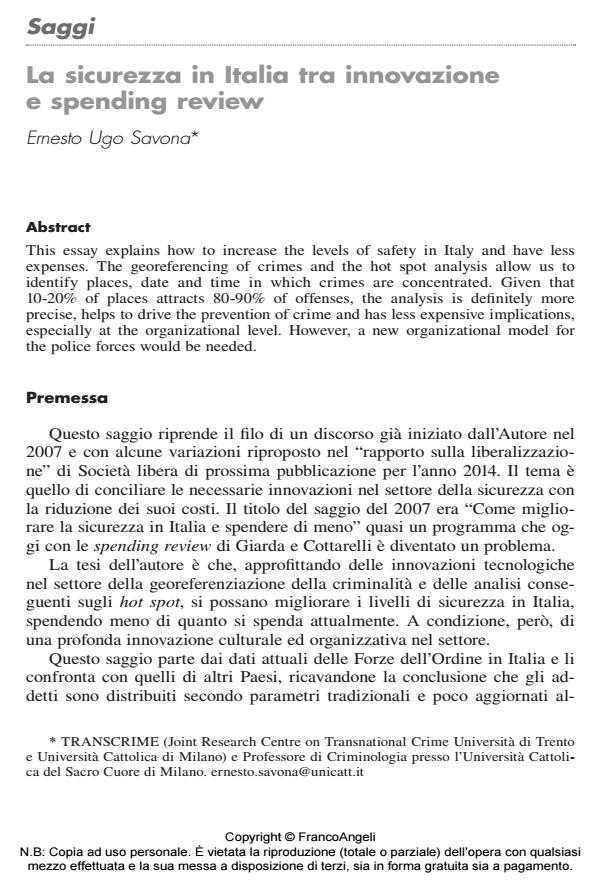La sicurezza in Italia tra innovazione e spending review
Journal title SICUREZZA E SCIENZE SOCIALI
Author/s Ernesto Ugo Savona
Publishing Year 2014 Issue 2014/2
Language Italian Pages 12 P. 19-30 File size 79 KB
DOI 10.3280/SISS2014-002003
DOI is like a bar code for intellectual property: to have more infomation
click here
Below, you can see the article first page
If you want to buy this article in PDF format, you can do it, following the instructions to buy download credits

FrancoAngeli is member of Publishers International Linking Association, Inc (PILA), a not-for-profit association which run the CrossRef service enabling links to and from online scholarly content.
This essay explains how to increase the levels of safety in Italy and have less expenses. The georeferencing of crimes and the hot spot analysis allow us to identify places, date and time in which crimes are concentrated. Given that 10-20% of places attracts 80-90% of offenses, the analysis is definitely more precise, helps to drive the prevention of crime and has less expensive implications, especially at the organizational level. However, a new organizational model for the police forces would be needed.
Ernesto Ugo Savona, La sicurezza in Italia tra innovazione e spending review in "SICUREZZA E SCIENZE SOCIALI" 2/2014, pp 19-30, DOI: 10.3280/SISS2014-002003